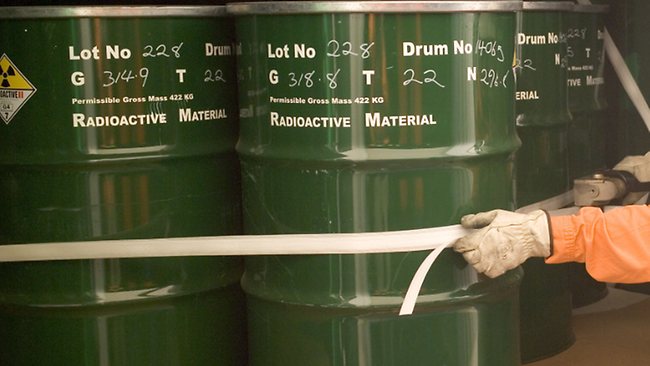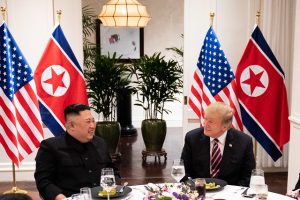by Marsha B. Cohen
Once again revelations concerning the genesis of Israel’s undeclared nuclear weapons program are attracting notice.
Two nuclear experts, Victor Gilinsky and Roger J. Mattson, have again raised questions as to how Israel might have acquired the nuclear materials needed to build its nuclear bombs in a provocatively titled article, “Did Israel steal bomb-grade uranium from the United States?”
Why now? The Interagency Security Classification Appeals Panel (ISCAP), the nation’s highest classification authority, has released a number of top-level government memoranda that may provide additional grounds for suspecting that during the 1960s, bomb-grade uranium from the Nuclear Materials and Equipment Corporation (NUMEC) reprocessing plant in Apollo, Pennsylvania made its way into Israel’s nuclear weapons program. “The newly released documents also expose government efforts, notably during the Carter administration, to keep the NUMEC story under wraps, an ironic twist in view of Jimmy Carter’s identification with opposition to nuclear proliferation,” write Gilinsky and Mattson in the Bulletin of Atomic Scientists.
Four years ago, in March 2010, the two researchers wrote “Revisiting the NUMEC Affair” for the Bulletin. They contended there was abundant evidence available from declassified documents to support suspicions that at least some of the 337 kg. of radioactive materials that had gone missing from NUMEC in the 1960s from the plant in Apollo had been stolen and taken to the nuclear research reactor in Dimona, Israel. The cited documents also reveal that the FBI, CIA, the Atomic Energy Commission (AEC) and members of the top echelons of the U.S. national security establishment were aware that NUMEC’s founder and president, Zalman Shapiro, not only had ties to Israeli intelligence officers and operatives with science-related job descriptions, but had also allowed them into the NUMEC plant.
Among them was Rafael Eitan, a “chemist” for Israel’s Defense Ministry who also happened to be a former Mossad officer, as well as the handler of naval intelligence spy, Jonathan Pollard, who has been in the news recently. Just how much was already known about Eitan’s role in NUMAC’s “diversion” of nuclear materials to Israel, and the extent of Israeli espionage activities conducted in the U.S. — second only to that of the KGB according to one top-level source quoted by name — is evident from a 1986 article by Washington Post reporter Charles Babcock about the Pollard case.
Grant W. Smith, Director of the Institute for Research: Middle Eastern Policy (IRmep) followed up Gilinsky and Matson’s 2011 disclosures with a report based on documents obtained under the Freedom of Information Act (FOIA) and other documentary evidence including corporate filings, office diaries and unguarded interviews. The report was published in January 2012 as a book titled, Divert! NUMEC, Zalman Shapiro and the diversion of US weapons grade uranium into the Israeli nuclear weapons Program. According to Smith, former CIA Tel Aviv station chief John Hadden claimed that NUMEC was “an Israeli operation from the beginning.”
Gilinksy and Mattson, initially more circumspect in drawing conclusions than Smith — in part because the released documents are highly redacted — credited Smith with having kept up the pressure for the release of more declassified documents. On March 18 the ISCAP released 84 additional pages (PDF) of previously classified documents related to concerns about the illegal diversion of weapons-grade nuclear material from NUMEC to Israel’s nuclear weapons program. The new documents include:
- A letter dated April 2, 1968 from CIA Director Richard Helms to Attorney General Ramsey Clark about a large loss of uranium from NUMEC. In 1965, the AEC had acknowledged the possibility of missing nuclear materials having been diverted, but had tried to play it down.
- An FBI memorandum (03/09/1972) discussing “the distinct possibility” that NUMEC’s director, Zalman Shapiro, had been responsible for the diversion of special nuclear materials.
- Notes from a briefing of President Jimmy Carter’s National Security (07/28/1977) by Theodore Shackley, the CIA’s Associate Deputy Director, revealing that then-CIA Director George W. Bush had briefed President-elect Jimmy Carter about “the NUMEC problem” in December 1976, even before Carter had taken office.
- A memorandum to Carter from National Security Adviser Zbigniew Brzezinski (08/02/1977) that expressed dismay not only about careless accounting practices used to keep track of uranium in NUMEC’s possession and lax AEC oversight, but even more at the considerable interest in NUMEC’s loss of nuclear materials among certain members of Congress, which Brzezinski considered “dangerous.” Determined to broker a peace deal between Israel and Egypt, the last thing Carter wanted were revelations confirming Israel had nuclear weapons, particularly if they had been created with materials from the U.S., so Carter shut down the NUMEC investigation.
- Declassified wiretap transcripts of conversations between Shapiro and venture capitalist David Lowenthal that reveal illegal storage practices, which led to a dangerous nuclear spill.
In their most recent article for the Bulletin, Gilinsky and Mattson sum up what the various declassified documents, including those most recently released, confirm about NUMEC’s probable role in providing Israel with highly enriched uranium with which to produce nuclear weapons:
NUMEC’s unexplained losses were a significantly larger proportion of its output of highly enriched uranium than was the case for other firms that dealt with nuclear materials. Sloppy accounting and lax security made the plant easy to rob without detection. NUMEC had commercial relationships with Israel’s defense and nuclear establishments and regularly made sizeable nuclear shipments to Israel, which at that time were not checked by the AEC. NUMEC’s owners and executives had extremely close ties to Israel, including to high Israeli intelligence and nuclear officials. Israel had strong motives to obtain the highly enriched uranium before it was producing enough plutonium for weapons. High-level Israeli intelligence operatives visited the NUMEC plant. Israeli intelligence organizations were used to running logistically complicated, risky operations to support nuclear weapons development, and it would have been very much out of character for them to pass up an opportunity like this.
Why does it matter now?
Despite its continuing denials, it is almost universally recognized that Israel possesses nuclear weapons, and there’s next to zero likelihood Israel will give them up. Does it matter how Israel got its nuclear materials half a century ago, and if so, why?
1. The environmental disaster NUMEC left behind. NUMEC’s carelessness in handling its toxic nuclear waste left behind an environmental disaster that has barely been addressed. Cleaning up the Shallow Land Disposal Area in Parks Township, Pennsylvania, contaminated by radioactive leakage from drums of toxic chemical and radioactive waste dumped by NUMEC and its successors — the Atlantic Richfield Co. and BWX Technologies (also known as Babcock & Wilcox) — may cost as much as half a billion dollars, according to the Army Corps of Engineers and the Wall Street Journal. The cleanup began in 2011 but was halted soon afterwards, and it won’t resume until 2015. In the hands of a new contractor, the cleanup may last a decade, and even then the chances of success are uncertain. Declassification of more NUMEC-related documents could facilitate the cleanup and even reduce its cost by disclosing details about where and how the toxic nuclear materials were discarded.
2. The proposed release of Israeli spy Jonathan Pollard. A CIA damage assessment of the Pollard case was declassified in December 2013. Although Pollard himself was only a small cog in the Israeli espionage network, Smith points out that none of the files handed over by Pollard to his handler, Rafael Eitan, part of the Israeli team visiting NUMEC in 1968, have ever been returned. He recommends that “if President Obama releases Pollard, it should be preceded by the belated return of the massive trove of classified documents he stole for Israel as well as all purloined nuclear materials and technologies.”
3. Undermining assertions of U.S. commitment to transparency in governance. “Nearly 50 years have passed since the events in question,” Gilinsky and Mattson contend. “It is time to level with the public. At this point it is up to the president himself to decide whether to declassify completely the NUMEC documents, all of which are over 30 years old. He should do so. We know that is asking a lot given the president’s sensitivity about anything involving Israel, and especially anything relating to Israeli nuclear weapons. But none of his political concerns outweigh his responsibility to tell the US public the historical truth it deserves to know.”
4. Undermining U.S. commitment to nuclear nonproliferation. “We’ve lost a great deal of respect around the world on the subject of nonproliferation,” Gilinsky told Global Security Newswire (GSN) in an e-mail interview. “The president doesn’t even acknowledge that Israel has nuclear weapons, which means no one in the government can…Leveling on [this] affair, painful as it might be in the short run, would be a step toward what you might call a reality-based policy in this area.”
5. Future relations with Iran and North Korea. Mattson opined to GSN that disclosure of whatever the U.S. knows about the disappearance and diversion of nuclear materials from NUMEC would be to Washington’s advantage in dealing with Iran and North Korea, irrespective of whether or not Israel was the perpetrator of nuclear theft. In negotiating with Iran and North Korea, “it is important for all sides to come to the table openly and honestly, as they declare their various interests in the deal they are trying to strike.” U.S. credibility would be enhanced by the full declassification of documents from the 1960s and 70s, especially if these documents were to reveal that the U.S. has been frank and forthright about NUMEC. If the U.S. hasn’t been honest up until now, Mattson sees the NUMEC document declassification as an opportunity to “atone for past mistakes and go back to the negotiating table refreshed by the experience” thereby setting an example for states that it accuses of duplicity.






Eye opening for the masses, refreshing post Ms Cohen, thank you. Isn’t it time to stop calling a spade a heart and be honest with the citizenship, both in the U.S. as well as the world? This seems to peal away another layer of why the U.S. allows Israel the latitude it enjoys. We have been fooled by the whole group, or be what ever name one might give them, that on the surface, it’s outright corruption through bribery, when in reality, it’s “Nuclear Blackmail”. Far fetched, delusional thinking, I don’t think so. I also don’t think leaving Armageddon in the hands of thieves, is good for the human race. I sure hope that the U.S.Navel Nuclear Submarine Fleet is keeping it’s eyes on those Israeli Submarines, for they certainly have the ability to incinerate the major cities of the world. If this idea isn’t at the front of overall thinking by our so-called intelligence services, as well as the Pentagon, then perhaps they are just as corrupt as the Congressional Stooges.
Fascinating and important report. Bravo.
Not so much of a surprise, if they can attack our USS Liberty and kill 34 of our seamen and injure 172 more without a mummer from our government, why should we be surprised at their stealing our top secret nuke plans or anything they do?